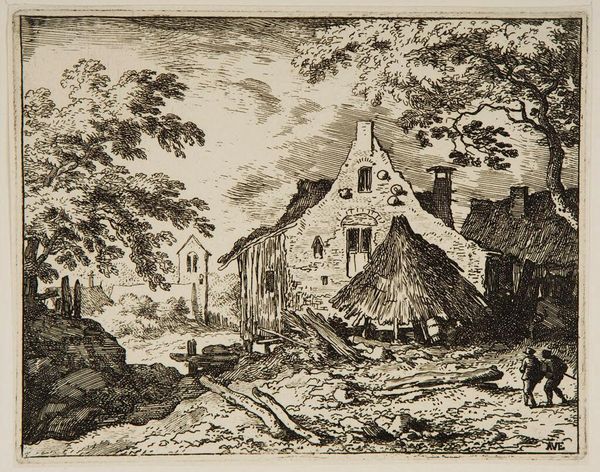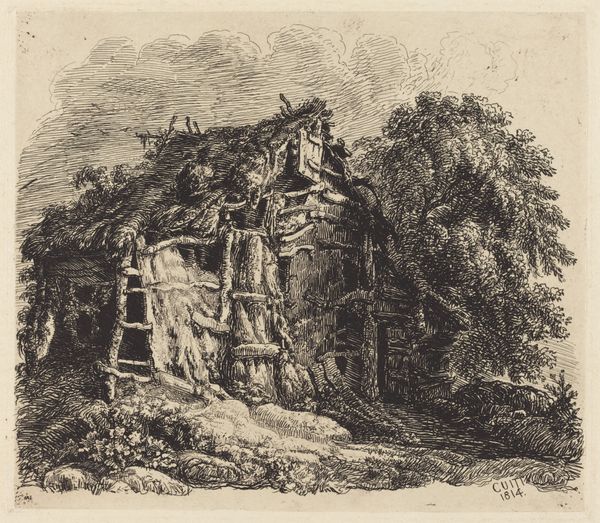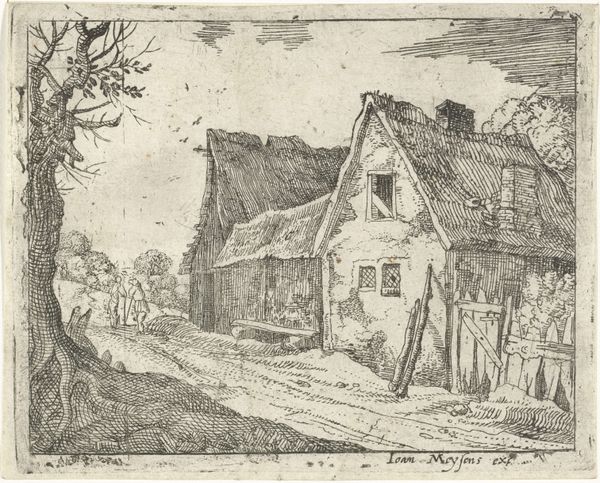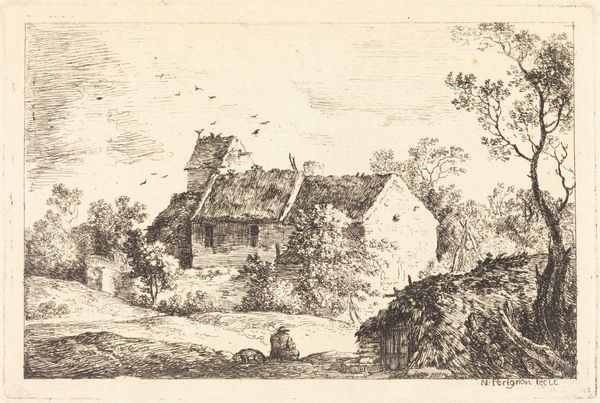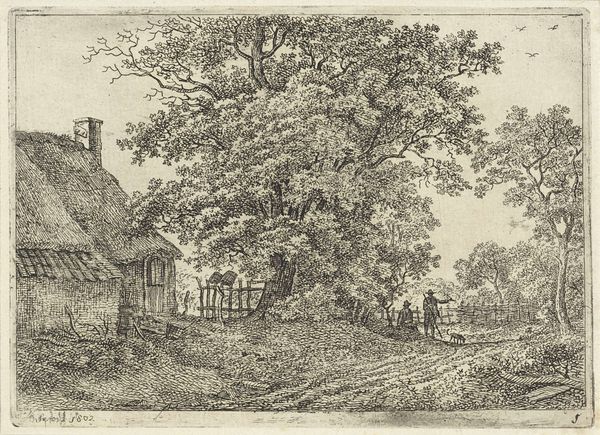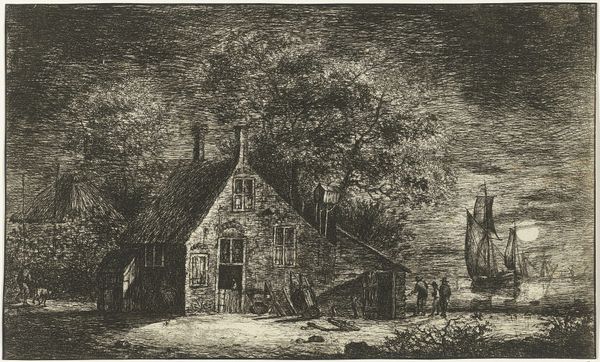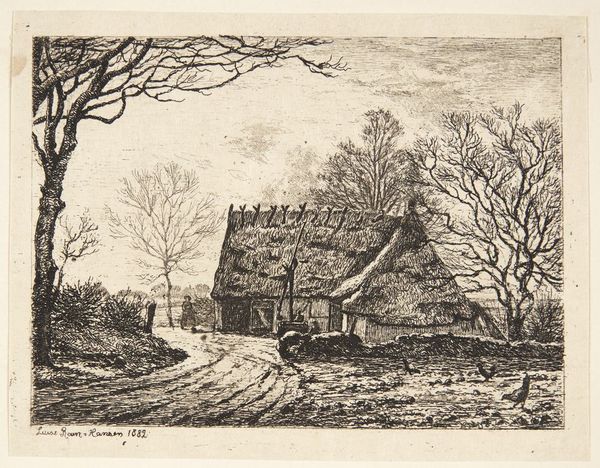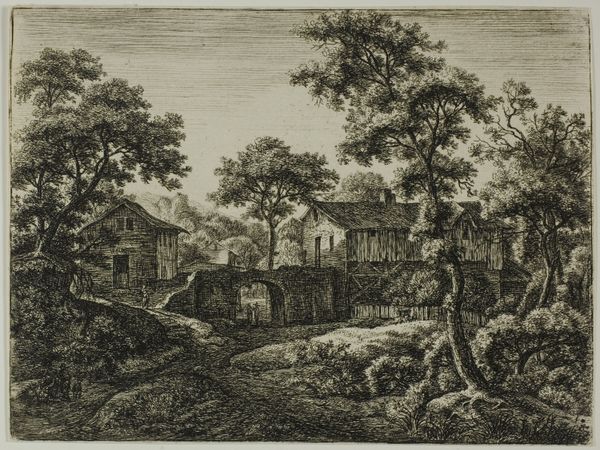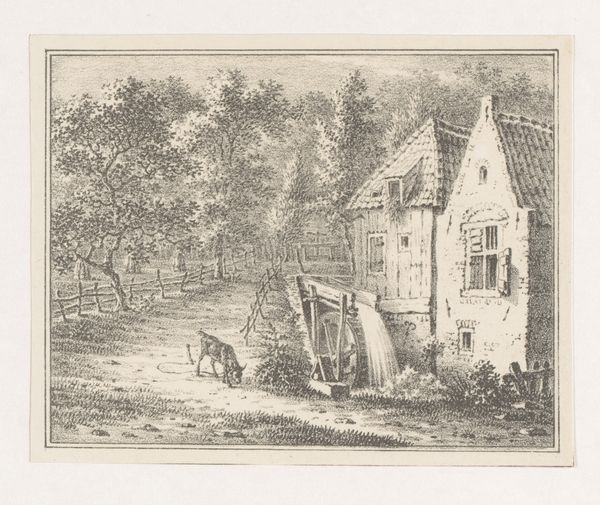
drawing, print, ink, engraving
#
drawing
#
ink painting
#
pen drawing
#
dutch-golden-age
# print
#
landscape
#
ink
#
engraving
#
realism
Dimensions: Sheet: 4 15/16 × 6 5/16 in. (12.6 × 16 cm)
Copyright: Public Domain
Curator: At the Metropolitan Museum of Art, we're looking at "The Haybarn with Movable Roof," a compelling ink drawing produced sometime between 1621 and 1675 by Allart van Everdingen. Editor: It has such a whimsical, almost Brothers Grimm quality about it. The scratchy textures, that quirky house, everything looks delightfully unsettled! Curator: The piece is an engraving, or possibly a print, reflecting the style we now term as Dutch Golden Age. Think about the historical moment—the rise of mercantile power, the reshaping of landscapes. Editor: You see that so clearly! Me, I am simply taken by how lively and free it feels. He is a landscape painter but what if we imagined that it’s all about home and its secrets? It could be so wonderfully eerie. Curator: The "movable roof" detail on the haybarn isn’t just practical. It’s also Everdingen signaling control over nature—a manipulation. Editor: Ah, a control…or surrender. See how those two figures down near the stream are completely integrated with the mud and muck, like Adam and Eve after a particularly disappointing harvest. Curator: We mustn't over-romanticize rural labor! This era wrestled with complex issues. But yes, even with his skill, his medium keeps its connection to common touch, to the idea of accessibility and distribution. Editor: See! But for me that’s why it still breathes, because, yes, of its cultural importance, but also of the emotional impact and beauty it delivers at first glance. Curator: "The Haybarn" encapsulates key elements in the relationship between man and nature. It invites critical dialogue and the interrogation of traditional views of rural existence, don't you agree? Editor: Definitely! This ink work is much more than lines on the page; it's a meditation, and sometimes a chuckle, about life, isn't it?
Comments
No comments
Be the first to comment and join the conversation on the ultimate creative platform.
